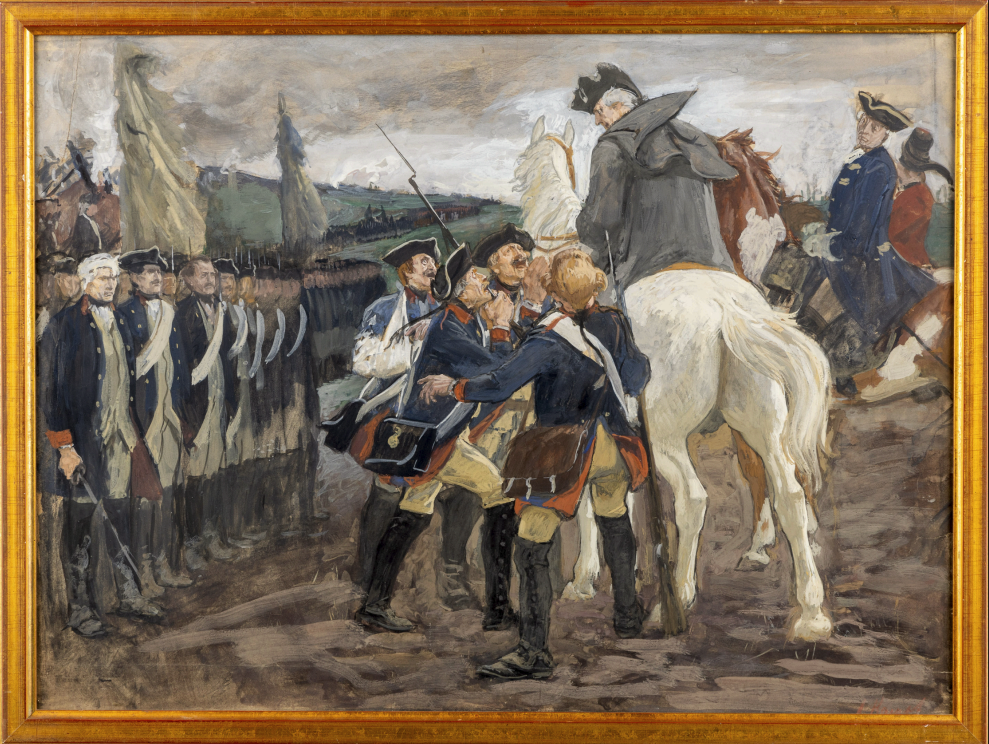In 1939’s “Great German Art Exhibition” (Große Deutsche Kunstausstellung) at the Haus der Kunst in Munich, he was represented by numerous works, including The Struggle of Light Against Darkness, on loan from the Reich Chancellery. ‘The same year, he received the Adlerschild des Deutschen Reiches with the inscription: “To the German painter” (Dem deutschen Maler).
Celebrated for his life’s work of paintings, many of which concerned aspects of German history, Kampf was, on the occasion of his 75th birthday, added to the so-called “List of Immortals” (1939). This guaranteed him immunity from interference in artistic work during the Second World War.
In 1944, at the age of 79, Kampf was one of 24 artists, architects, authors, composers, actors, and singers added to the Gottbegnadeten list, meaning he was considered absolutely indispensable to German culture.
In May 1944, Kampf went to the village of Lower Silesia after Berlin was evacuated during bombings by Allied Forces. In Lower Slesia, Kampf’s wife, Mathilde was killed in a traffic accident.
Shortly before his death in 1950, at the age of 85, Kampf published a memoir called Aus Meinem Leben.
Throughout his life, Kampf held membership in the Association of Rhine-Westphalian Artists (honorary membership), the Society of German Watercolorists and the Association of German Illustrators, and he belonged to the Society of Berlin Artists in Berlin (1900–1930). In Düsseldorf, Kampf belonged to the Malkasten Artists‘ Society (1887–1898, honorary member after 1947), the St. Luke’s Artist’s Club (1892–1903), the Society of Düsseldorfer Artists, and to the Free Federation of Düsseldorf Artists.
Kampf’s father, August Kampf was an Aachen painter and Imperial court photographer. Kampf’s older brother, Eugen, was also a well known painter.

